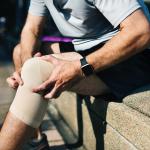Incorrect posture has long thought to be causes of pain in a variety of settings. Most commonly seen in office working staff, this is a regular presentation we see at the clinic. We wanted to write this blog to let you know what the most recent literature says, debunk some unhelpful myths and let you know how you can beat this pain. In a nut shell: YOUR BEST POSTURE IS YOUR NEXT POSTURE! Long periods of being in one posture are not helpful, keep moving is key.
What does the evidence say?
High quality research is continually finding the association between sitting posture and pain is not as concrete as once thought. This has been investigating in the cervical spine, shoulder, thoracic and lumbar spines (references available at the end). They conclude that individuals can both experience pain, and not in very similar postures. Other points they derive are certain postures e.g. anterior pelvic tilt, forward head posture and rounded shoulders were not predictive of pain by themselves. This makes sense as most people we see describe their pain as periodic, it comes and goes, even though posture likely remains the same. If posture were the sole producer of pain, it would be pretty constant through their life.
What happens when I get pain?
Our bodies are not designed to sit still for too long. Even when we are still, our bodies are still burning energy to keep blood flowing, heart pumping, lungs breathing and our mind focused. Energy production results in acid released into the muscles and blood stream. Certain structures may become sensitised due to being in certain positions as well. This is not harmful, but it can result in feeling of pressure, discomfort and pain. No matter what position you are in, if you maintain a steady posture for hours on end, you’ll feel the need to move at some point! (Moseley & Butler, 2017)
What else can contribute?
We consider a few things: Injury History, sitting habits, occupational workload, general health, physical activity and a few more.
Does this mean posture is irrelevant?
No, however consider the following points:
- Natural variations in muscluloskeletal structure will result in different posture being comfortable between people
- There is not one perfect posture you need to maintain to be pain free.
- The time spent in one posture, general health, sleep habits, physical activity and presence of stress are important to consider in the overall picture.
Can you change posture?
This is a common goal we hear. This is in reference to years of thinking that there is a ‘perfect posture’ and the though that posture can predict pain. A few points the research and our clinic experience say:
- The way our body is aligned is largely due to our skeletal structure which cannot be changed.
- Research consistently shows we can reduce your pain regardless!
What can you expect from us?
We listen and assess your pain from all necessary perspectives. Treatment is then targeted to you and will involve education, manual therapy for quick pain reduction, with prescription of exercise and good health behaviours to keep your pain down.
Self-management is also key for this type of pain, here are some tips to get you started:
- Listen to your body during the day – regular position changes and breaks from sitting
- Make sure you have a comfortable desk and chair set up - Have your seat adjusted to your hips are higher than your knees.Have your feet firmly on the floor or on a footrest. Position monitors to minimise repetitive neck movement.
- Keep up good health behaviours including regular sleep and healthy diet
- Consider day to day work habits, try not to compensate for lower productivity with increased hours
- Continue a combination of general exercises and strengthening. Make sure you enjoy it!
- Heat packs are useful for short term relief, but don’t rely on them.
References:
Lewis, J. S., Green, A., Wright, C. (2005). Subacromial Impingement Syndrome: The role of posture and muscle impalance. Journal of Shoulder and Elbow Surgery. 14(4). 385-392.
Grob, D., Frauenfelder, H., & Mannion, A. F. (2007). The association between cervical spine curvature and neck pain. European spine journal : official publication of the European Spine Society, the European Spinal Deformity Society, and the European Section of the Cervical Spine Research Society, 16(5), 669–678. https://doi.org/10.1007/s00586-006-0254-1
Laird, R.A., Gilbert, J., Kent, P. et al. Comparing lumbo-pelvic kinematics in people with and without back pain: a systematic review and meta-analysis. BMC Musculoskelet Disord 15, 229 (2014). https://doi.org/10.1186/1471-2474-15-229
Toftgaard-Christensen, S., Hartvigsen, J. (2008). Spinal Curves and Health: A Systematic Critical Review of the Epidemiological Literature Dealing With Associations Between Sagittal Spinal Curves and Health
Moseley, G. L., & Butler, D. S. (2017). Explain pain supercharged: The clinician's manual.
Our Barnes Clinic
Our clinic is located in Barnes, South-West London and is easily accessible by public transport.
For more information including parking and other practicalities see our Barnes clinic page
Book an Appointment
Booking an appointment with one of our therapists is quick and easy. There is no long waiting time and you don’t need a referral from your GP.









